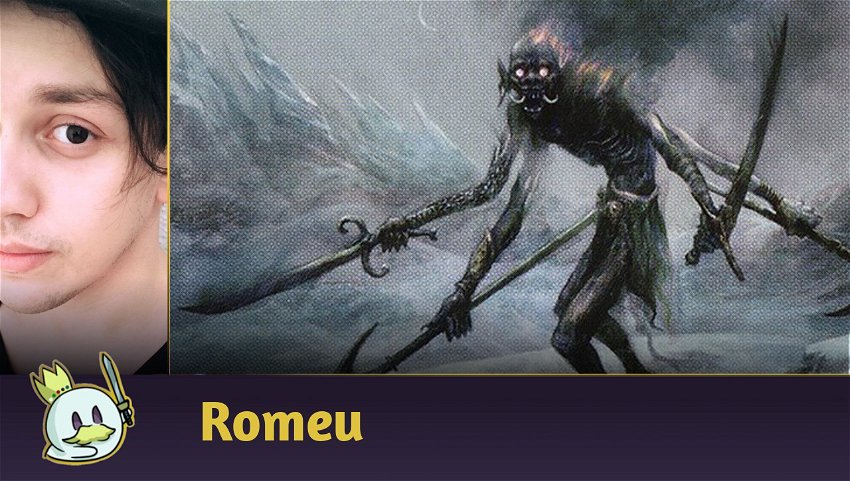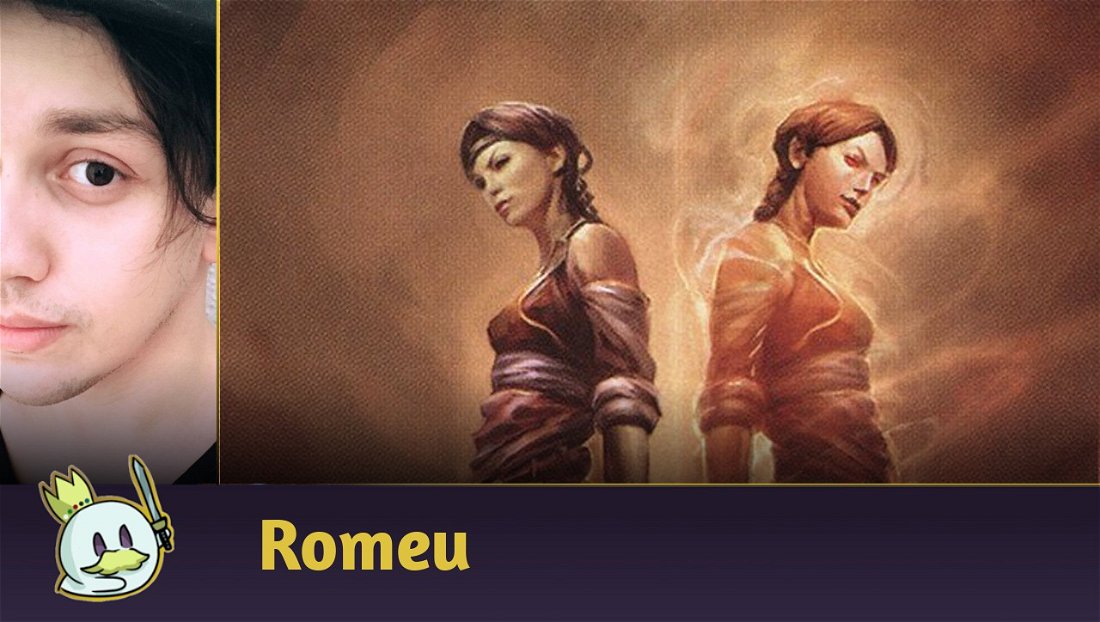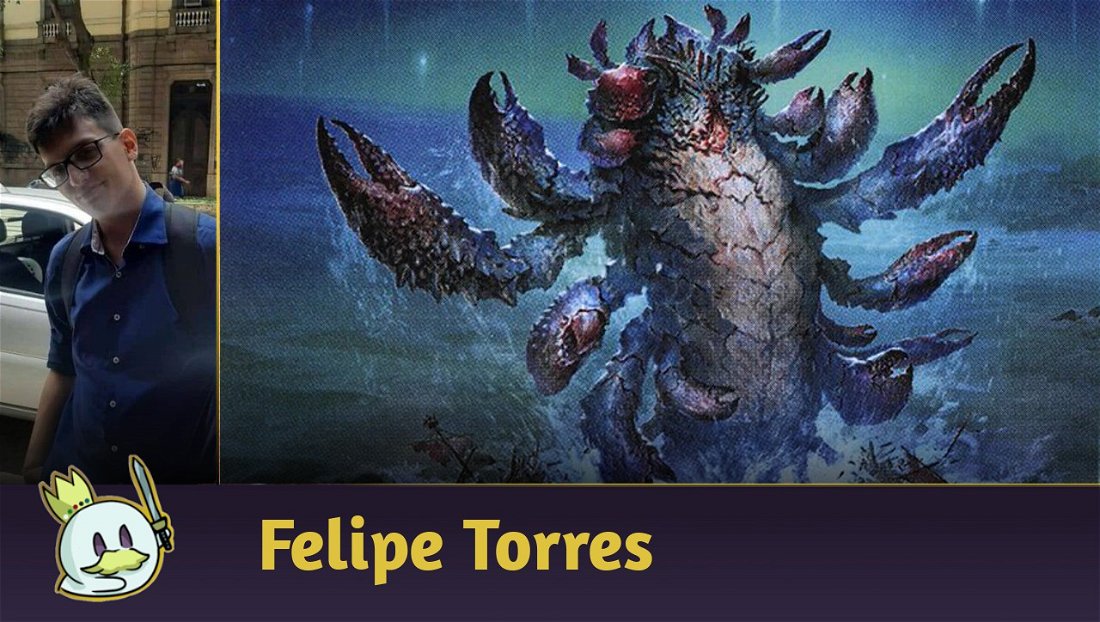For today's article, I decided to bring you a different proposal from what you are used to in my content: instead of dissecting and analyzing a well-established archetype of a competitive format, explaining how to pilot it and bringing a Sideboard Guide and how to behave in each game, today I will present you a deck from my Laboratory of Madness.
As I've mentioned in other articles, I'm simply fascinated by card games and strategy — especially Magic — and this leads me to do a lot of research on related subjects, Metagame analysis, checking out news and, of course, build the most varied decks to try out my ideas.
Today, I decided to present one of these out-of-the-box lists, contextualizing its creation and in which environments this strategy could succeed. However, I emphasize that many of these lists are sketches of ideas with some testing done, but never actually used in Challenges or larger events, and definitely can be improved or completely discarded in favor of better archetypes and ideas - but some are interesting enough to share and analyze the context where it fits, including an understanding of what is missing (or not) for this archetype to work.
The Decklist
Taking inspiration from Modern's 2017 Death's Shadow lists and Pauper's Dimir Delver back in 2018/2019, came the attempt to unite one of Pioneer's lesser-known combo cards with a Tempo shell that seeks to take advantage of the graveyard to cast hard to kill threats in the current Metagame.

The first thing to think about the context in which this list came about is that the current Pioneer is at a moment where Delve creatures are well-positioned in the Metagame if you know which ones to select.

If we look at the most played removals in Pioneer today, we notice that many have restrictions that make them useless against a high-cost creature that you can cast for the least amount of mana possible — Fatal Push, Portable Hole and March of Otherworldly Light care about mana values that no Delve threat would actually become a target of, while their bodies dodge Strangle, Reckless Rage and Chandra, Torch of Defiance.

The most frequent removals that would work against them are — except for Lightning Axe in Izzet Phoenix — mostly less played, usually having two copies in their respective decks, and to deal with these problems, we could turn to an old acquaintance.

Alongside any creature with power 4 or greater, Stubborn Denial becomes a Negate for one mana, being incredibly useful to protect your threats or avoid powerful threats, and if we add that many Pioneer archetypes today follow a trend of casting bombs for a higher cost and tapout for this, the Force Spike when Ferocious is not enabled is a means of delaying the opponent or catching them off guard right away when they cast a Planeswalker.
However, there are many ways to deal with Delve threats through infinite chump-blocks, using better removals for these situations, or just plain graveyard hate in the Maindeck (and this is a huge problem now that Unlicensed Hearse exists), and while we can't do much about the last element, there is one creature that provides us with the necessary benefits to become a massive threat the moment it hits the board.
Maindeck

Everyone knows the Soulflayer lists that appeared occasionally on Pioneer during its first year of existence, but hardly making any significant results. Usually, the idea was a turbo self-mill where your focus was to have Zetalpa, Primal Dawn and preferably Samut, Voice of Dissent to make Soulflayer a Megazord with Flying, Double Strike, Trample, Indestructible, Haste and Vigilance that would end the game in three turns.
While this proposal seems valid and the most absurd way to cast this creature, I never liked how we forced bad cards that were practically dead in your hand and required another way to discard them to be useful, significantly worsening your topdeck.

So, I looked to add elements that offer some useful value beyond abilities to the main piece of the list, and abilities like Cycling or Channel are precisely where we should look for creatures that will never be dead cards in our hand — and here I've selected the keywords which are the most relevant to Soulflayer: Hexproof for built-in protection that allows us to optimize Stubborn Denial for more important things and Flying to allow us to attack over many blockers.
Striped Riverwinder offers Hexproof and will likely never be cast, basically functioning as a one mana "cantrip", but giving Soulflayer the ability to protect itself.
Curator of Mysteries offers Flying and is relatively easy to cast when the game extends, where it becomes an evasive threat on its own and which also triggers Stubborn Denial, being one of the means of not depending on the graveyard to win games.

Sometimes a 4/4 creature with Flying and Hexproof isn't enough, and you need more abilities.
Considering the proposal that every card in the deck needs to be usable in some way, I chose to include Nighthawk Scavenger as a complementary threat that we don't care too much if it dies because it will add Deathtouch and Lifelink to Soulflayer, decreasing significantly the opponent's clock, as well as adding Flying if you don't have a Curator of Mysteries in your graveyard.

The two copies of Tasigur work as an extra threat that positively trades with various creatures while also having a powerful late-game manasink, operating as a Card Advantage engine.

Finally, Brazen Borrower works as an interaction that allows you to bounce any problematic permanent while also acting as a complementary threat, as well as giving Flying to Soulflayer if it lands in the graveyard.

In terms of protection and disruption, we have a low-cost package to delay the opponent and protect our creatures, with Stubborn Denial functioning as a Negate that also forces the opponent to respect the possibility of a Force Spike on some important spell, and Thoughtseize to get information and remove a permanent or spell that would be extremely troublesome to deal with.

Our list isn't the best Fatal Push archetype in the world, and while we want to fill our graveyard fast, Fabled Passage is a little too slow for our purpose, so I chose to add a set of Bloodchief's Thirst, which works like a Dreadbore in Late-Game and deals with most small creatures at Sorcery-Speed for the first few turns. If the Metagame becomes a place where we need more Instant-Speed interactions to deal with Spirits, I would probably add Fatal Push instead.
Of all the black 2-mana removal options in Pioneer, Infernal Grasp was the most attractive because it has no restrictions, and despite its damage being harmful against some archetypes, I believe Nighthawk Scavenger's Lifelink and/or Soulflayer and the other low-cost removals make up for this issue in Game 1 against Mono Red, and Bloodchief's Thirst also deals with several problematic creatures of this archetype.

As an additional card selection and to speed up Delve, we have a few cantrips that interact with the graveyard, with Consider being a pretty obvious inclusion.
I've tested several two-mana options like Tainted Indulgence, Curate and even Discovery // Dispersal, and each of them has advantages and disadvantages to each other — I opted for Strategic Planning because it's the cantrip that allows us to dig deeper for what we need while putting the most cards in the graveyard, but I can imagine situations where each of the others mentioned would be better.

The first thing you're probably wondering is if 18 lands isn't too little for this list, and I also thought it would be and started building it with 20, and we could cut something like Brazen Borrower or Infernal Grasp if necessary, but I noticed two points that made me reduce the number of lands.
The first is that our curve is extremely low: we have 26 spells that virtually cost one mana, 10 that cost two, and only six that cost three, among which we have 16 ways to draw cards where eight also help filter the top. So, it's easy to get enough mana to play your spells each turn.
The second is that we don't have fetchlands in Pioneer, increasing the chances of you drawing lands even when you run few, and you usually don't want to go over four or five mana with this list because that's the most you need to, for example, cast Curator of Mysteries with a Stubborn Denial backup.

I also resort to some utility options to mitigate a possible flood, with Hive of the Eye Tyrant as a complementary threat while Takenuma, Abandoned Mire and Ipnu Rivulet serve to increase the number of cards in your graveyard.
Sideboard

Our worst enemies are Rest in Peace and Unlicensed Hearse, and while we get to play around with the New Capenna artifact, Rest in Peace is absolutely brutal. Therefore, we need to resolve this issue quickly.
A set of Duress, alongside Thoughtseize and Stubborn Denial, is probably enough to interact in the early turns of the game with a targeted hate, but we also need ways to deal with the enchantment if it comes into play, and while Feed the Swarm is a better option in this regard, having extra copies of Brazen Borrower allows for better interactions with the rest of the format, is a complementary threat and also clears the number of cards exiled with Unlicensed Hearse — all while allowing you to return something troublesome from your opponent's hand to remove with a discard or counterspell.

We also have some extra removals to improve our game against Aggro or attrition matchups, with Fatal Push for small creatures and Baleful Mastery for Midrange games where the flexibility of paying one or four mana can make a huge difference depending on the board state

Speaking of attrition matchups, Jace, Wielder of Mysteries is our card advantage engine and speeds up Delve while granting us more cards every turn.

Interestingly, the best way to deal with others' Unlicensed Hearse is with your own since, if each player has a copy of that artifact on the battlefield, a sub-game is created where one can respond to the activation of the another exiling the same cards, reducing the power of the other's Hearse. Of course, this doesn't solve the problem of our graveyard being exiled on a recurring basis, but it's a useful means of mitigating damage if the matchup also requires graveyard hate.
However, Hearse's main role in this list is to exile problematic things, especially Arclight Phoenix, as we have little means of dealing with it permanently.
Disdainful Stroke is present for Big Mana matchups, especially Mono-Green Devotion and Niv-to-Light, where your main targets will be Cavalier of Thorns, Niv-Mizzet Reborn and any anything else that prevents us from attacking from the air.
Deck Analysis
I tested this list in a league and came up with a result of 3-2, which is average, but vaguely interesting considering the idea seems kind of bad in theory.
Pros
The main advantage I've noticed is that few players can handle Soulflayer and, once you cast it with at least Hexproof and Flying, you just control the other side of the board for a few turns, and you'll win the game — something easier when we have Nighthawk Scavenger in the graveyard.
Another highlight was how Stubborn Denial is absurd when opponents don't wait for it, even without a big creature on the board as no one respects a Force Spike until it happens, and when they do, they virtually give us a "turn" by not casting their bomb.
Also, we attack from many angles (although most resort to the graveyard) and because it's a little-known list, your opponent tends to be confused by your proposal until you cast Soulflayer, and situations where you cast a Nighthawk Scavenger just for them to eat a removal and/or trade with an opponent's creature just to cycle Striped Riverwinder on the next turn and cast a Soulflayer with deathtouch, lifelink, flying and hexproof.
Speaking of casting, any hand with Strategic Planning and a one mana spell/cycler in the starting hand is a guarantee to cast a Delve threat on turn 3, and few opponents can keep up with you after that
Cons
As expected, this list is extremely vulnerable to the format's top graveyard hate today, especially Unlicensed Hearse, as the opponent can even respond to the Cycling ability by exiling the card you just discarded, and despite playing around it is a possibility, it prolongs the game too much, and they will usually have more resources than you.
Another problem is that things get very complicated when you draw multiple copies of Delve threats and few ways to fill the graveyard.
Finally, there are moments where you need to a huge setup to accomplish few things while being pressured by your opponent, like in a match against Prowess decks.
Alternate Choices

One possibility for this archetype is to accept that Soulflayer is only absurd next to Zetalpa, Primal Dawn and seek to better interact with looting effects like Tainted Indulgence and Ledger Shredder to put it into the graveyard — something that would even solve the question of the opponent responding with Unlicensed Hearse.
Another possibility is to simply drop the Soulflayer idea and focus on Turbo Delve with Gurmag Angler and Otherworldly Gaze, which would also make it possible to resort to Ledger Shredder, since I didn't put it in the list above because eight of my draw effects aren't spells you cast, thus not triggering its Connive.
Conclusion
Considering all the points presented, my final verdict on this version of Soulflayer is that, today, this deck tries to do the same thing as Esper Greasefang, but with a less explosive payoff.
However, that doesn't make Dimir Soulflayer any less fun and interesting for players looking for a way to emulate a Dimir-based Tempo in Pioneer, an archetype that significantly lacks any complementary threat less reliant on the graveyard to function by the format's standards.
Finally, Dimir Soulflayer is a viable option for anyone looking to play at their local store with an interesting and fun idea that might steal some wins, but I can't recommend the current version for a Qualifier or any other big event until we have relevant upgrades on future sets
Thanks for reading!













— Comentarios 0
, Reacciones 1
Se el primero en comentar